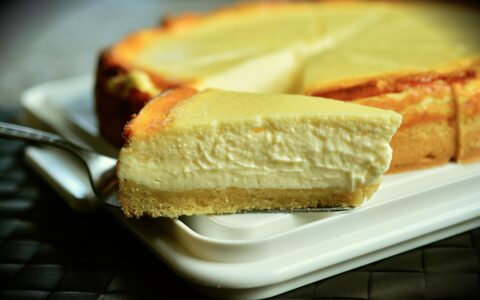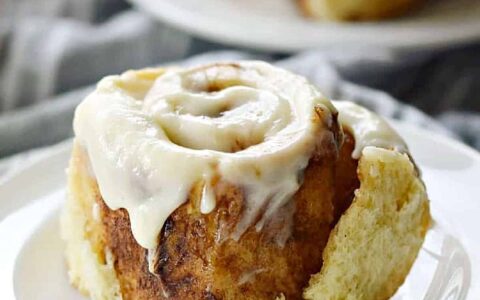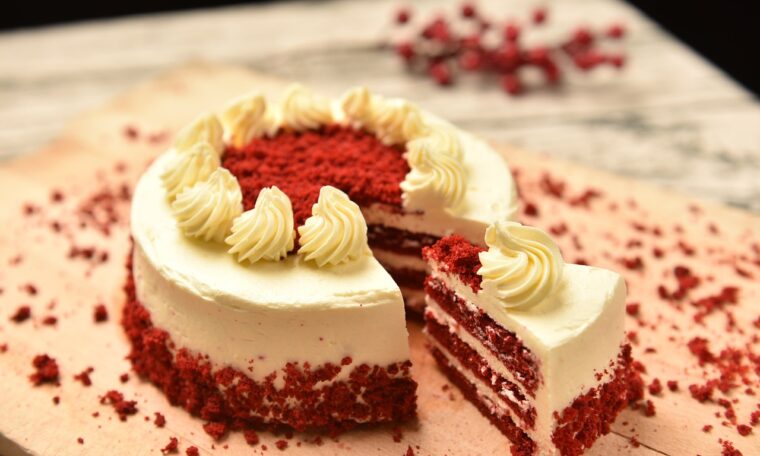
Win Your Next Pageant
Thank you for reading this post, don't forget to subscribe!Get Pageant Questions Written By A Miss Universe Judge
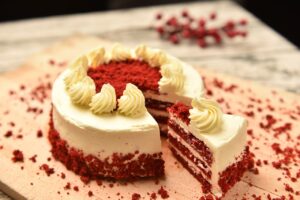
Red Velvet Cake: A Scarlet Icon of American Baking
Few desserts command attention like the majestic red velvet cake—its striking crimson hue, velvety crumb, and snow-white frosting have made it a staple of Southern hospitality and celebration tables nationwide. But behind its glamorous appearance lies a rich history of culinary innovation, marketing genius, and cultural symbolism that transformed this cake from a Depression-era staple to a modern icon.
The Origins of a Legend: From “Velvet” Cakes to Red Sensation
The story of red velvet cake begins not with food coloring, but with chemistry. Early “velvet” cakes (dating back to the 1800s) gained their name from their unusually fine, soft crumb—a texture achieved through innovative mixing methods and the use of cocoa powder, which was then a luxury ingredient. These cakes were often made with:
- Vinegar & buttermilk – The acidic combination tenderized gluten while reacting with cocoa to create a subtle reddish tint
- Natural cocoa (non-alkalized) – Unlike Dutch-processed cocoa, its acidity enhanced both color and flavor
- Beet juice – Some historians note early versions used beets for moisture, sweetness, and color
The cake’s modern identity emerged in the 20th century, shaped by two key events:
- The Great Depression – Resourceful bakers amplified the natural reddish hue with boiled beet juice to stretch expensive ingredients
- World War II – Food rationing led to the use of red food coloring as a vibrant substitute, popularized by the Adams Extract Company’s marketing campaigns
The Science Behind the Scarlet Crumb
What makes red velvet unique isn’t just its color—it’s a masterclass in balanced baking chemistry:
1. The Acid-Alkali Dance
- Buttermilk + vinegar react with baking soda, creating bubbles for lift while tenderizing gluten
- Natural cocoa (acidic) deepens flavor and enhances the reddish hue (unlike alkaline Dutch-process cocoa)
2. Fat’s Role in Texture
- Oil-based batter yields an ultra-moist crumb that stays tender for days
- Eggs emulsify the liquid and fat, stabilizing the vibrant color
3. The Frosting Factor
- Cream cheese frosting (a mid-20th-century innovation) provides tangy contrast to the cake’s subtle chocolate notes
- Cooling requirement – The frosting’s dairy base makes refrigeration essential, adding to the cake’s “special occasion” aura
Cultural Ascension: From Southern Staple to National Icon
Red velvet’s journey to fame reflects America’s culinary evolution:
- 1920s-30s: Served at upscale hotels like Winnipeg’s Fort Garry Hotel and New York’s Waldorf-Astoria (though the latter’s claim to invention is debated)
- 1940s-50s: Became a signature Southern dessert, often served at holidays and weddings
- 1989: Entered pop culture via the armadillo-shaped red velvet cake in Steel Magnolias
- 2000s-Present: Achieved cult status through Magnolia Bakery, Cake Boss, and social media’s love of photogenic foods
The Great Food Coloring Debate
Purists argue traditional recipes need no dye (relying on the cocoa-buttermilk reaction), while modern bakers embrace the vibrant hue. Key considerations:
- Natural alternatives: Beet powder or pomegranate juice can provide color but may alter flavor
- Gel vs. liquid food coloring: Gel offers intense color without thinning the batter
- Psychological impact: Studies show red enhances perceived sweetness and indulgence
Modern Twists on a Classic
Today’s bakers reinterpret red velvet while honoring its essence:
- Gluten-free/vegan versions use almond flour and plant-based dyes
- Deconstructed desserts like red velvet cheesecake or macarons
- Savory riffs such as red velvet pancakes with cream cheese glaze
Why Red Velvet Endures
This cake’s staying power lies in its:
- Nostalgic appeal – Evokes memories of celebrations and Southern hospitality
- Visual drama – Instagram’s #RedVelvetCake has over 3 million posts
- Balanced flavor profile – Subtle cocoa, tangy frosting, and just-enough sweetness
Ready to Bake?
Whether you’re team “natural tint” or “vibrant dye,” red velvet cake remains a testament to baking alchemy. Follow our classic recipe to create a dessert that’s as rich in history as it is in flavor—a true slice of American culinary heritage.
Fun Fact: The largest red velvet cake ever made weighed 15,032 lbs (Guinness World Record, 2011)! Will yours be next? 🎂❤️ ownthatcrown.com
Equipment Needed (Amazon Deals, Buy Now, Click On Link Below)
-
Mixing Bowls – at least two: one for wet ingredients, one for dry
-
Electric Mixer or Stand Mixer – for creaming and mixing the batter
-
Measuring Cups and Spoons – for accurate measuring
-
Rubber Spatula – for scraping and folding
-
Whisk – for mixing dry ingredients
-
Sifter – to sift dry ingredients (especially flour and cocoa powder)
-
Cake Pans (two 8-inch or 9-inch Round Pans) – standard for layer cakes
-
Parchment Paper – to line pans and prevent sticking
-
Cooling Racks – to cool the cake layers evenly
-
Cake Tester – to check doneness
🧁 For the Cream Cheese Frosting:
-
Mixing bowl – large enough for frosting ingredients
-
Electric Mixer or Stand Mixer – for whipping the frosting until fluffy
-
Spatula – to spread frosting
🍰 Optional but Nice to Have:
-
Cake leveler or Serrated Knife – to level cake layers
-
Offset Spatula – for smooth frosting
-
Cake Turntable – for easy frosting and decorating
-
Piping Bag and Tips – if decorating with piped frosting
-
Cake Stand or Platter – for presentation
Classic Red Velvet Cake Recipe with Cream Cheese Frosting
A stunning crimson cake with velvety texture and tangy-sweet frosting
Prep Time: 30 mins
Cook Time: 25-30 mins
Total Time: 1 hour (plus cooling)
Servings: 12
Ingredients
For the Cake:
- 2½ cups (315g) all-purpose flour
- 2 tbsp (15g) unsweetened cocoa powder
- 1 tsp baking soda
- 1 tsp baking powder
- 1 tsp salt
- 1½ cups (300g) granulated sugar
- 1 cup (240ml) vegetable oil
- 2 large eggs, room temperature
- 2 tbsp (30ml) red food coloring (liquid or gel)
- 2 tsp (10ml) vanilla extract
- 1 tsp (5ml) white vinegar
- 1 cup (240ml) buttermilk, room temperature
For the Cream Cheese Frosting:
- ½ cup (115g) unsalted butter, softened
- 8 oz (225g) cream cheese, softened
- 4 cups (480g) powdered sugar, sifted
- 1 tsp (5ml) vanilla extract
- Pinch of salt
Optional Garnish:
- Red velvet cake crumbs
- Fresh berries
- White chocolate shavings
Instructions
1. Prep & Mix Dry Ingredients
- Preheat oven to 350°F (175°C). Grease and line two 9-inch round pans.
- Whisk together flour, cocoa powder, baking soda, baking powder, and salt.
2. Combine Wet Ingredients
- In a large bowl, beat sugar and oil until combined.
- Add eggs one at a time, then mix in food coloring, vanilla, and vinegar.
3. Alternate Dry & Wet Ingredients
- Add ⅓ of dry ingredients, then ½ of buttermilk. Repeat, ending with dry ingredients. Mix until just combined.
4. Bake
- Divide batter between pans. Bake for 25-30 mins until a toothpick comes out clean.
- Cool in pans for 10 mins, then transfer to a wire rack.
5. Make Frosting
- Beat butter and cream cheese until smooth. Gradually add powdered sugar, vanilla, and salt. Whip until fluffy.
6. Assemble
- Once cakes are completely cool, frost between layers and over the top. Garnish as desired.
Pro Tips
✔ Use gel food coloring for vibrant color without thinning the batter.
✔ Don’t overmix – this keeps the cake tender.
✔ Chill frosting for 20 mins if too soft to spread.
✔ Store refrigerated for up to 5 days.
Enjoy this show stopping dessert! ❤️🎂
Variations:
- Gluten-free: Substitute 1:1 GF flour blend.
- Dairy-free: Use plant-based butter, cream cheese, and almond milk + vinegar for buttermilk.
- Mini cakes: Bake in 6-inch pans for taller layers.



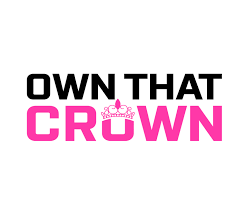 Subscribe to Our RSS Feed
Subscribe to Our RSS Feed
